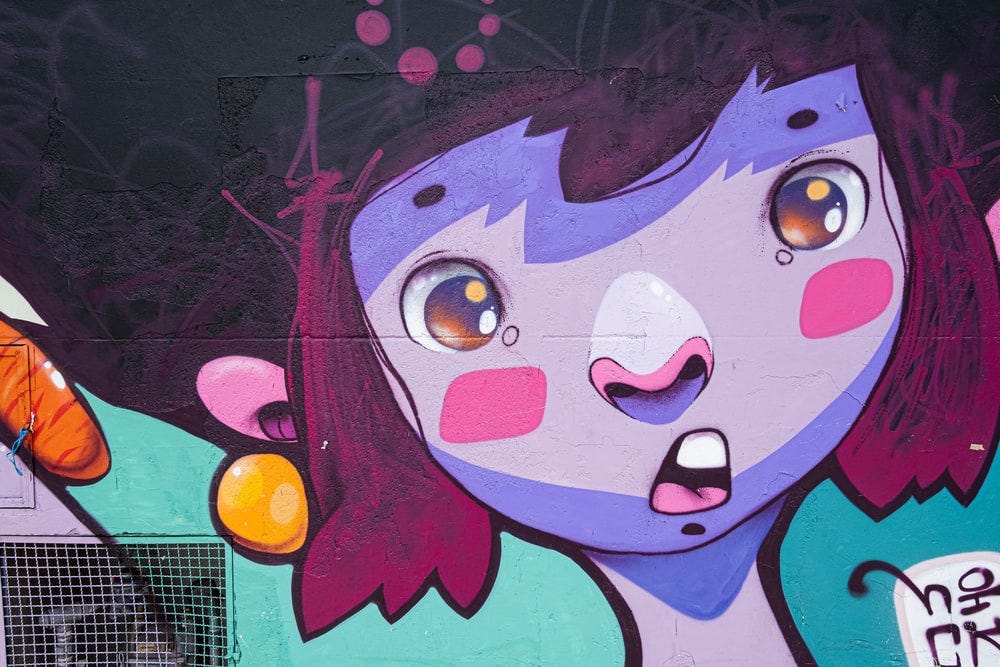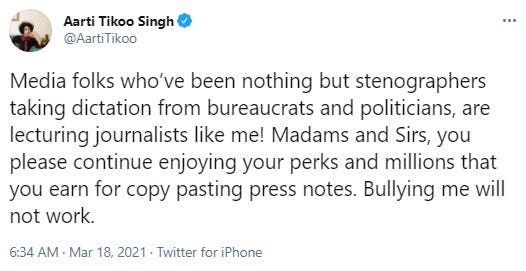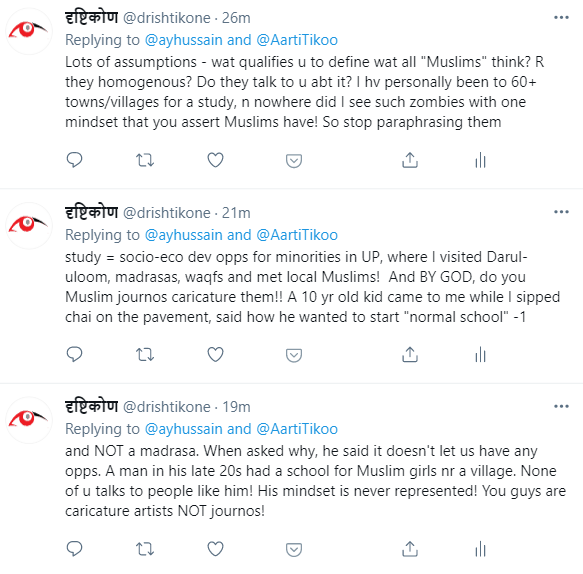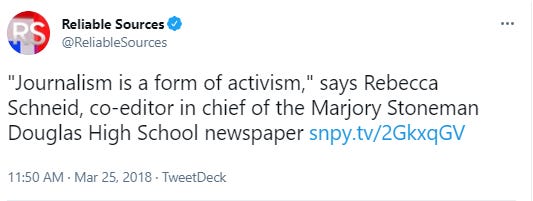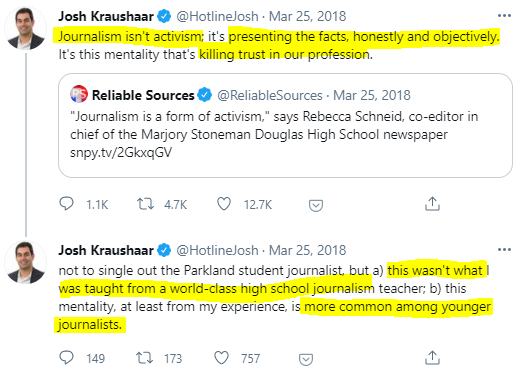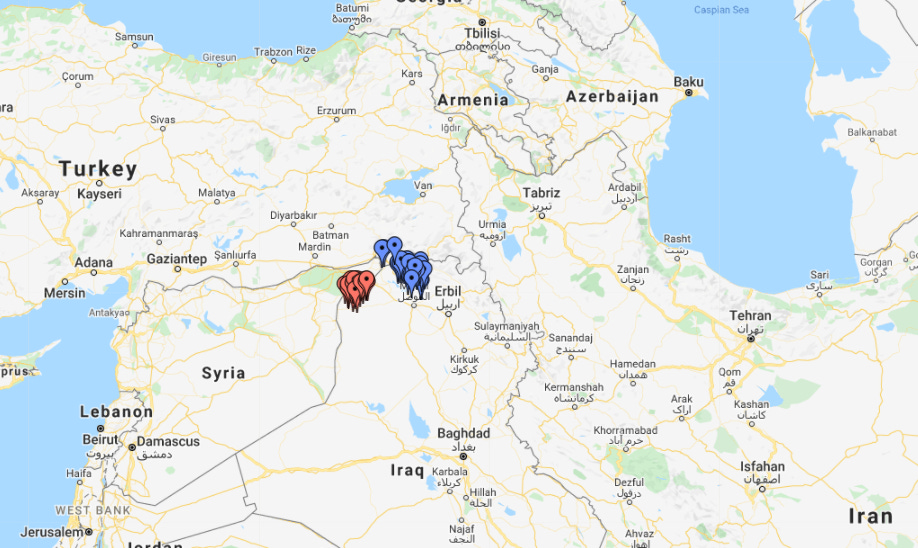Insightful newsletter of Drishtikone: Issue #268 - Activist Journalists and Mr. Dooley
Activism rolled into journalism has become a fashion statement. Bias and prejudice the new benchmark of journalistic honesty. Every report is now an opinion. Welcome to activist journalism.
Photo by Brunno Tozzo on Unsplash
“God is behind everything, but everything hides God. Things are black, creatures are opaque. To love a being is to render that being transparent.” ― Victor Hugo, Les Misérables
Every megalomaniacal crook and despot in human history had a pet in his court. That pet wrote about his times in a way that showed his master, the despot as a superstar and superhero. For example, Allaudin Khilji had Amir Khusrau (Amir Khusrau: The Sick Bigoted Psychopath).
In today’s world, that role is played by activist-journalists. They masquerade as journalists but are moral busybodies who carry water of someone’s moral edicts to inflict the society with their own version of the present.
They white-wash, selectively present the facts, and gaslight those they don’t agree with.
Let us go into the murky world of activist-journalism.
When Satirical caricature becomes the avowed mission
In 1893, Finley Peter Dunne, an American Humorist introduced a fictional character named Mr. Dooley. Dooley was the voice of an Irish immigrant, thick and strong Irish accent, who would expound thoughts and ideas on political and social issues. In his book Observations by Mr. Dooley, Dooley shares his thoughts on what newspapers ought to do in his view. Dunne, the humorist was at his sarcastic best. (The original piece is in heavily accented Irish English, so this is a more readable form for the readers)
When anything was wrote about a man ’twas put this way: ‘We understand on good authority that…is on trial before Judge G. on an accusation of larceny. ‘But we don’t think it’s true.’ Nowadays, the larceny is discovered by a newspaper. The lead pipe is dug up your backyard by a reporter who knew it was there because he helped you bury it. A man knocks at your door early one mornin’ an’ you answer in your nighty. ‘In name of the law, I arrest you,’ says the man seizin’ you by the throat. ‘Who are you?’ you cry. ‘I’m a reporter for The Daily Slooth,’ says he. ‘Photographer, do your duty!” You’re hauled off in the circulation wagon to the newspaper office where a confession is ready for you to sign; you’re tried by a jury of the staff, sentenced by the editor-in-chief, and at ten o’clock Friday the fatal thrap is sprung by the fatal thrapper of the family journal. The newspaper does evrything for us. It runs the police force and the banks, commands the militia, controls the legislature, baptizes the young, marries the foolish, comforts the afflicted, afflicts the comfortable, buries the dead and roasts them aftherward. (Source)
Dooley was satirizing the fetish of the journalists to become activists.
In a spectacular irony, a version of Dooley's sarcastic take on the nonsense prevalent in the press somehow became the mantra of many a journalist.
“The job of the newspaper is to comfort the afflicted and afflict the comfortable.”
Is it really?
The idea of comfort and soothing the afflicted seems altruistic but there is a fundamental dichotomy here.
Who is afflicted?
How does that get determined? And who determines it?
More importantly, given enough "patronage” can the afflicted be manufactured?
The very idea of moral intervention by non-mandated actors who do not represent any qualification relative to the voice of the people is reprehensible. IN fact, even in the case of being the voice of the people, they cannot start trading as moral busybodies.
On the totem-pole of media bias and interventions, activism comes in many hues. Opinions shared as reporting is the most egregious, and somewhat obvious. This has also been the most recent pandemic within the media industry (notice it is an industry after all!).
What, however, escaped most scrutiny and identification was the fundamental bias in the selection of what news we read in the first place. The Gatekeeping Bias.
Political actors produce a large number of messages, but not many of these are likely ever to reach the public. In part, this is because citizens are still mostly exposed to political actors’ messages via the news media, but these can only present consumers with a sample of all messages from political actors. Hence, much of what citizens are able to read, see, and hear about political actors is ultimately determined by journalists and editors. This is known as media gatekeeping (Shoemaker & Reese, 1996)—that is, “the process by which countless occurrences and ideas are reduced to the few messages we are offered in our news media” (Shoemaker & Vos, 2009, p. 75). (Source)
For example, Assistant Police Inspector Sachin Vaze who had remarkable access and affluence was arrested due to his involvement in a terrorist act by the National Investigation Agency (NIA) in Mumbai. New and extremely explosive information is coming out every day. (Source) But most of the TV media has been avoiding detailed discussions on it.
The gatekeepers of our conscience, as Dooley so masterfully voiced, have worked hard over the years to shape our reading and news on offer. What they don’t report, effectively never even happened. So many crimes that happened and were never reported and were thrown into the garbage bins of press history have skewed the analyses of those times.
The despots in history hired servile chroniclers to write a history that embellished them. The media of today plays the role of servile embellishers on hire for today’s powerful.
Just that the powerful of today may sometimes be outside the society where such an ideological attack is unleashed.
We have written about how journalism itself has become a weapon in the hands of those who want to deconstruct a society - Issue #234 - Journalism as Weapon
But before we go ahead, let us discuss something that happened just today.
Interviews, Articulation, and Media
Aarti Tikoo Singh shared a very interesting video, where she is talking to a Muslim in Assam who is talking about NRC and CAA. The guy starts saying “CAA is bad for them.” When asked why - not threateningly or aggressively as most “woke journos” do - he couldn’t answer why. He didn’t know why it was bad for them.

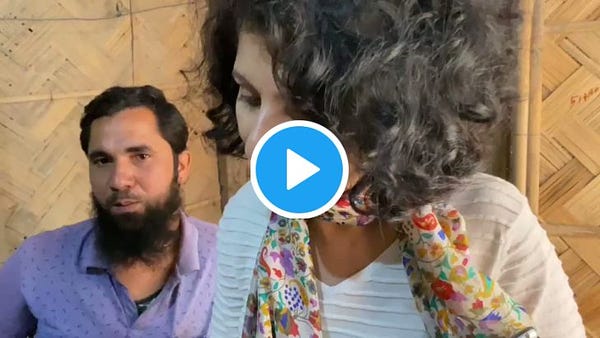
While many folks who had their journalism right praised Singh’s different, “old school” style of journalism, the “woke journos” got rattled. To which Aarti shared her tweet dismissing them the way they should have been.
I retweeted Aarti’s tweet with my comment to which a journalist, who apparently has been BBC’s North India Correspondent replied. This started a conversation which is very interesting.
That he thought the people who couldn’t spell out why CAA is bad for Muslims are inarticulate is telling. It shows his brand of journalism. For, he expects the Muslims in India to parrot the narrative that “journalists” like he are promoting on media outlets like BBC and CNN.
Journalists like him are not satisfied with reporting the views of people on the street while they are probed with non-aggressive and non-threatening questions. They will not stop until the person on the street echoes their version.
And that is something I challenged him on. Muslims have many groups. They have usually been clubbed together from a political stand-point. It is time to realize that they are not all same. And so, every denomination of Muslims should be approached in a different way from a political standpoint. For, their needs, concerns, and imperatives - both duniyavi (worldly) and deeni (religious) are different. What is needed by say, a Barelvi from a religious standpoint is not always aligned to say a Shia or an Aga Khani.
By becoming the spokespersons of the entire Muslim community, as if it is homogenous, these Muslim journalists think they can set the “Muslim narrative” in front of the world. And, the fact is that they actually are able to do it as well.
Only because no one is even asking the different denominations for their voices to come out.
How is it that these journalists and “intellectuals” create differentiation between Dalit, Tribal, Lingayat within the Hindu community, to break down the narratives that they want to set, but in case of the Muslim community, they simply treat the whole community as one and set upon the task of defining it themselves?
This is not just activism, it is Machiavellian politics that these folks play on the citizenry.
That is why one pushed on that point further.
And, this activism - actually aggressive form of representation without qualification, in a way to shut out the voices of those who are not “articulate” enough to parrot the talking points of these activists (masquerading as journalists) is what is destroying journalism across the world.
There was a letter to the editor in Canada’s daily “National Post” from a reader that really brought home this point strongly. It was in the context of an article titled ‘Traumatized’ student snowflakes behind Ryerson controversy will never make it as journalists by the NP journalist Danielle Kubes. He was discussing the way journalism was being taught at the Ryerson University.
Things have gotten worse since then. A few years ago, I was disturbed to read a comment from a Ryerson journalism professor, saying that they tried to inculcate a sense of “social responsibility” in their students. That mission has placed both journalism and its students on a slippery slope to the place Kubes describes now — social activism and its cousin political activism have now replaced reportage and fair comment. As a consumer, I want to read news and fair comment (emphasis on fair) written by the brightest and the best in the business, not social justice activism, tarted up to look like news. (Source)
Social activism tarted up to look like news.
That is precisely what reporting has become these days. And, this was reflected in a comment that CNN’s Brian Stelter tweeted about from his program “Reliable Sources.”
This one comment kicked off a big storm on the Twitter.
Josh Kraushaar, a columnist at National Journal, made a comment on this quote from Rebecca and on the confusion amongst the journalists of today and their fetish with activism.
But Rebecca is not alone. This overwhelming contamination of the journalism field by almost fanatic and unapologetic moral busybodies.
Kiva Hanson who graduated from the School of Journalism at the University of Oregon writes about how her “activism made her a better journalist.”
I was an activist before I was a journalist. I’ve always been involved in activism, particularly since 2016. Currently, I work at the UO Women’s Center, a feminist collective working to end societal oppression. I ventured into journalism in high school, when I joined the yearbook staff. It was not until very recently that I began to call myself a journalist. Now I’ve realized that being an activist makes me a better journalist. (Source)
It is these days that
The question that is being asked is “Is Journalism simply activism"?”
But Journalism is a very wide word. It encapsulates Opinion and News Reporting. Stony Brook University has a lesson on News Vs Opinion.
One of the more confusing things about journalism is the appearance of opinion inside news shows, news websites or newspapers. We're not talking about a report that quotes experts or witnesses providing their opinion of what happened or will happen. We're talking about journalists who express their opinions, in movie reviews, columns and editorials and video commentaries. (Source)
Activism - often without a mandate for representation - is the new form of journalism.
The use of journalistic skills within *activist media to report on, and inspire political engagement with, one or more issues. Activist journalists are typically activists first and journalists second, with the latter function serving the former. (Source)
When they are indeed peddling a certain version of morality and shape of the society, often forced upon the public conscience - the important question is - do they have even that mandate?
One can understand a democratic leader who represents a majority voice articulating a social transformation, but how can someone with nothing more than a pen - or a keyboard now - hoist her or his morality on the rest of us?
That is why we wrote about the question of representation - Issue #258 - Are we being represented?
It may seem we are in a new era, but aside from the degree and intensity of violent and aggressive activism, the dishonesty of the journalists, as so beautifully articulated by Mr. Dooley, unfortunately, remains intact.
market corner: 10 quick bytes
India set to become a major hub of lab-grown diamonds - more
Indian art galleries join global frenzy for Non-fungible token-based (NFT) artwork with new blockchain ventures - more
Over 23 crore tests conducted for detection of coronavirus in India - more
Maharashtra farmers start fresh fruit cake 'movement' to sustain during COVID-19 pandemic - more
Delhi Chief Minister Arvind Kejriwal recently announced the setting up of the Delhi Board of School Education (DBSE) - more
Retail jewelers likely to sustain recovery with 30-35% growth in FY22, outlook stable: Report - more
Registration fee waiver for new cars, 25% rebate on road tax: Gadkari unveils vehicle scrapping policy - more
Adani Green raises $1.35 billion debt from 12 banks - more
59% employers in India not in favor of 'work from home’, says report - more
Government to create 2 lakh tonnes of onion buffer stock - more
nota bene
Pop-up Call Center fraud: A guy from Gurugram used pop-up ads and a call center to defraud unsuspecting Americans for up to $3 million. The facts of the case put forward by the US federal prosecutors state that internet pop-up advertisements were used to fool computer users into believing that their computers were affected by malware. These advertisements would make the users believe that they needed computer protection services. A number would be displayed, and when dialed, the users would be routed to call centers run by Narang. Further, these call center operators would call the affected users to tell them they could get a refund of the amount paid. They would then say a refund has been processed to the user. To double-dip, these operators would call the users again to tell them they had refunded an excess amount, and that these users would have to repay the difference. (Source)
Khela shesh hobe: Challenging Mamata Banerjee's 'Khela Hobe' slogan, Prime Minister Narendra Modi on Thursday promised jobs, development, and education in the poll-bound state of West Bengal. Addressing a public meeting in West Bengal's Purulia ahead of the state assembly elections, PM Modi said, "Didi bole khela hobe, BJP bole chaakri hobe. Didi bole khela hobe, BJP bole vikas hobe. Didi bole khela hobe, BJP bole shiksha hobe. Khela shesh hobe, vikas aarambh hobe." (Source)
Temple Land-grab for Islamic cemetery: At the time when West Bengal is gearing up for the Legislative Assembly elections, an alleged land grabbing case has come to the fore in Nadia district. According to a report by News Nation, local Muslims in Nadia’s Ghoshpara area have illegally grabbed 30 Bigha (approximately 10 acres) of age-old Hindu temple land to build a cemetery. According to the report, the Hindus in the area have claimed that the local Muslims took advantage of the nationwide lockdown imposed by the government to control the coronavirus pandemic and illegally acquired the state land which the Hindus were using for a long time to conduct pujas and religious ceremonies. (Source)
Kashmiri Migrants Returned: A total of nearly 3800 migrant candidates have returned to Kashmir in the last few years to take up the Prime Minister (PM) package jobs. Post abrogation of Article 370, as many as 520 migrant candidates have returned to Kashmir for taking up the jobs that have been provided to them under the rehabilitation package. (Source)
GPS-based Toll Collection: The Modi government plans to roll out another reform in the way toll is collected on the national highways. Union Road Transport and Highways Minister Nitin Gadkari said on Thursday (18 March) in Lok Sabha that the govt is all set to roll out complete GPS-based toll collection within a year. (Source)
video corner: Who are the Yezidis
Yezidis are the residents of the Northern region of Iraq. Here is a map of the Yezidi villages. This group has been the most impacted in the genocide that was perpetrated in Iraq by ISIS.
Here is a very interesting and informative documentary video that shares the background of the Yezidis. I personally would take this with a grain of salt for I have seen that most Western folks do not have much appreciation for the spiritual aspects. Nor do they have the eye for the overall Dharmic framework and rituals/symbology.
Keeping the spiritual aspect aside, it does have information that will help us be more educated on the Yezidis.
Today’s ONLINE PAPER: Check out today’s “The Drishtikone Daily” edition. - THE DRISHTIKONE DAILY
Nuzzle Tweets “newsletter” - with tweets and stories that we read and follow in a day in one compilation on a daily basis - Nuzzle Drishtikone - just another way to keep up with things
SUPPORT DRISHTIKONE: If you consider our work important and enriching and would like to contribute to our expenses, please click on the button below to go to the page to send in your contribution. You can select the currency (for example, INR or USD, etc) and the amount you would like to contribute. Contribute to Drishtikone
If you like this post - please share it with someone who will appreciate the information shared in this edition.
If you like our newsletter, please share it with your friends and family




